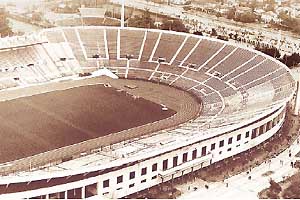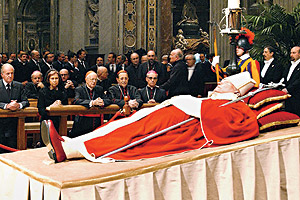The Constitution of 1925, written by a commission of notable personalities such as Jose Maza Fernandez, Domingo Amunategui Solar, Luis Barros Borgoño, Eliodoro Yañez, and José Guillermo Guerra, among others, gave the State and its ruler an essential role in the development of the country. It was established that the President of the Republic was the chief of government and of the State, having the faculty of naming his cabinet, participate in the writing of the laws and propose those who would become a part of the judicial power. In this way it was ratified by the constitutional text, which stated that «a citizen with the name of president of the Republic of Chile administers the State and is the supreme chief of the nation».
However, even thou the new fundamental letter was emphatic, the consolidation of the presidential regime took some years to settle. It even meant many social revolts and political inconsistencies from the parties and directors. A long path.
Provisional Government
After the resigning of Alessandri Palma and the provisional presidency of Luis Barros Borgoño, Emiliano Figueroa Larrain assumes the presidency of the country, on December 23rd of 1925. The lawyer, of a long political path, imposed himself without major opposition in the first direct elections of the presidential era.
Figueroa was not unknown to the government labors and he had already occupied the vice-presidency of the country twice due to the deaths of Pedro Montt and Elías Fernández (president and vice-president). For that reason, nobody was doubtful of his leadership and capacity to impose the necessary order in the country; however, the facts would show that not even his experience would be enough to calm down the minds in the cabinet.
The figure of Carlos Ibáñez del Campo acquired strength and, from its position as minister of War, he imposed an extremely authoritarian politic. The pressure exercised got to the point to where Emiliano Figueroa resigned from the presidency of the country on may 4th of 1927.
A Strict Ruler
After the consolidation of Carlos Ibañez del Campo as a political player and leader, it was the next logical step for him to take over the government after Emiliano Figueroa’s resignation.
His government was characterized por imposing strict rules in public administration. According to Ibañez, national stability had to be recovered through a restrictive work program that even bypassed the government’s legal mechanisms. Due to this, his term was characterized for the enactment of several decree laws that skipped the regular conduit for promulgating legislation.
In 1930 the Administrative Statute was enacted, which regulated the actions of State officials, which had increased greatly in the last few years. In addition, important educational reforms were introduced and an ambicious public works program went underway, greatly financed by foreign capitals.
However, an international event would complicate Ibañez del Campo’s administration.
In 1929, a great depression world affected the economy, which had direct repercussions on our nation’s finances. Debts had to be paid, the population’s purchasing power was steadily growing and unemployement rates also grew.
Faced with the country’s imminent bankrupcy, general unrest spread throughout the population, the president resigned on July 26th, 1931. Thus began a period of political confusion.
Political Anarchy
After the resigning of Ibañez, the radical Juan Esteban Montero assumed the position as vice-president. However, as soon as the political parties proposed the Presidency to Montero, he resigned and Manul Trucco temporarily assumed the charge.
In the elections of October 4th of 1931 Juan Esteban Montero was the winner. The new president was receiving a country economically unstable, so it was imperative to revitalize the productive activities and to reduce the public expenses.
However, Montero was not able to turn the numbers around, situation that increased the discontent of the civic and military population, and caused the appearance of three important figures in the opposition: the diplomat Carlos Davila Espinoza, the socialist Marmaduque Grove and the representative of the Nueva Asociacion Publica (NAP) (New Public Association), Eugenio Matte Hurtado.
The instability and the popular effervescence ended with a military pronouncement, headed by the Air Force under the direction of Marmaduque Grove. This provoked the immediate resigning of Montero and the forming of a government junta composed by Arturo Puga, Carlos Dávila y Eugenio Matte. This junta lasted very little time, due to the differences of opinion that ended with the leaving of Davila from the government, being replaced by Rolando Merino Reyes.
Davila, on its part, would conform a new government junta, with Nolasco Cárdenas Díaz and Alberto Cabero. This junta was able to restore the public order, but it didn’t have the popular support.
It was then when this junta was dissolved and Carlos Davila assumed the power, convoked elections and adopted a series of measures to turn the economy around.
His intentions of reestablishing the peace lasted little time, because the new ruler didn’t stimulate the interest of the population and possessed scarce supporters.
For that reason, he resigned and gave the power to the general Bartolomé Blanche. The latter, being conscious of the necessity of retaking the democratic path, resigned on October 2nd, giving the power to Abraham Oyanedel, who, in his role as the president of the Supreme Court and provisional governor, convoked elections, thus putting an end to the institutional chaos lived during those years.
The returning of Alessandri
After the events that plunged the country in the anarchy, the figure of the ex-president Arturo Alessandri Palma emerged as the possible pacifier of the stirring up. For that reason, on the presidential and parliamentarian elections, done on October 30th of 1932, he achieved a wide majority.
The politician returned to the main position of the nation, receiving it in awful economical conditions. For that, he implemented an effective plan of financial healing, which would allow him to face the pending commitments and the bankruptcy of the saltpeter companies. In regards to the latter point, the go was given to the creation of the Corporacion de Ventas del Salitre y Yodo (Covensa) (Saltpeter and Iodine Sales Corporation), in 1934, which achieved and important upturn of the activities in the north. Gradually, Alessandri Palma was giving the tranquility back to the country.
In this way, with the finances in order, it was possible to project a new plan of public works such as the civic neighborhood, the Estadio Nacional (National Stadium), the Law school of the Universidad de Chile and other studies referring to the implementation of roads, bridges, schools, etc.
In the last years of his government, he faced important protests. Events like the ones of Ranquil, where 200 people died, or the slaughter of the Worker’s Insurance stirred up the minds in the country, dividing the political alliances.








